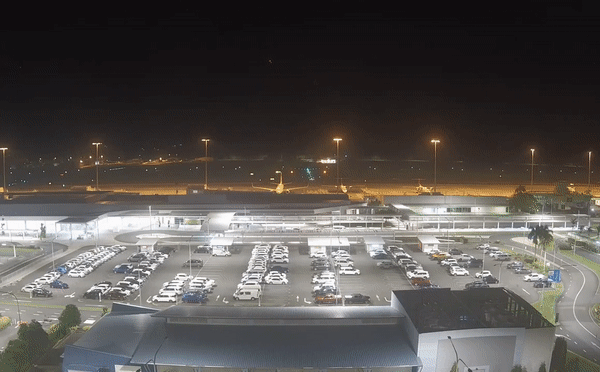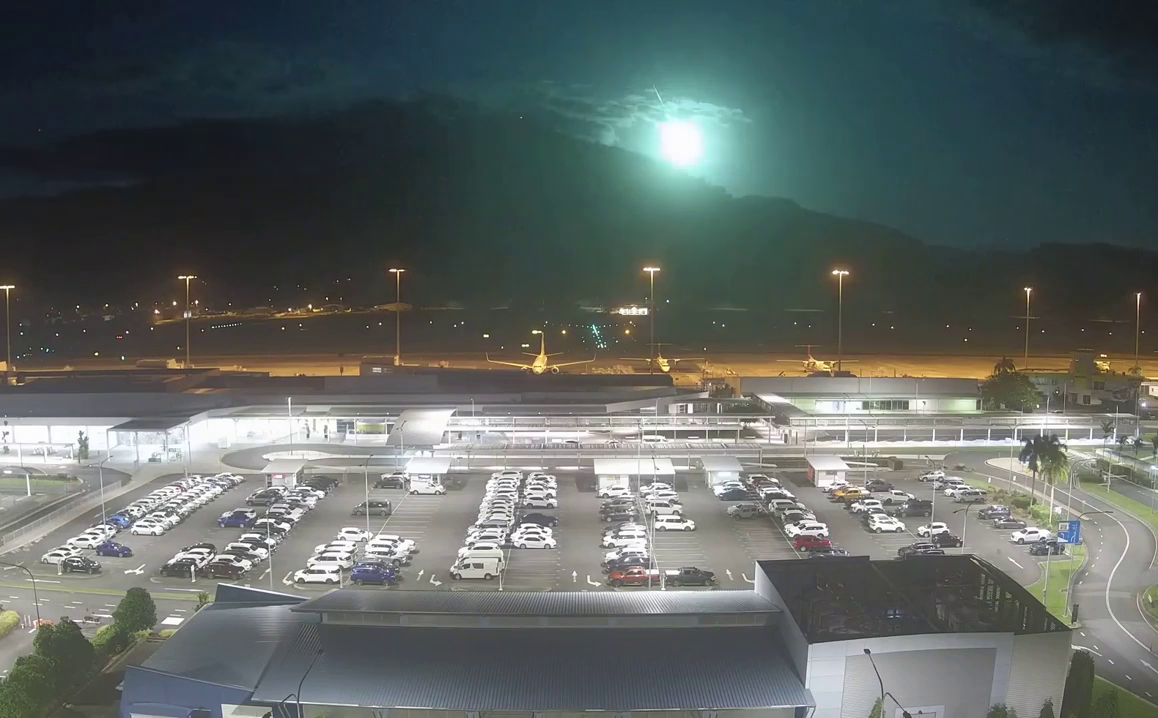Rare green fireball explodes over Australia, creating bright flash visible for hundreds of miles
The exploding meteor, known as a bolide, also created a sonic boom that shook a nearby town.

An unusual green meteor recently exploded as it plummeted through the sky over Australia, giving off a brilliant flash of light that could be seen for miles and a loud bang that stunned local residents below.
Cameras at Cairns Airport in Queensland captured a video of the exploding meteor, known as a bolide, at 9:22 p.m. local time on May 20. Video footage uploaded to the airport's Facebook page shows an initial green flash lighting up the night sky before a secondary white flash.
Additional footage captured on smartphones, dashcams and security cameras showed that the flash was visible as far away as Normanton, which is around 370 miles (600 kilometers) west of Cairns, The Guardian reported. The sound of the explosion could be heard most clearly above the town of Croydon, which is around 60 miles (100 km) east of Normanton, suggesting that the meteor exploded somewhere overhead.
The space rock was likely quite small, between 1.6 and 3.2 feet (0.5 and 1 meter) across, and could have been traveling up to 93,000 mph (150,000 km/h), Brad Tucker, an astrophysicist at Australian National University in Canberra, told The Guardian. Any fragments that crashed to Earth would likely have been very small and were likely still frozen, he added.
Related: Rock that punched hole in New Jersey house confirmed to be 4.6 billion-year-old meteorite
Bolides are meteors that blow up in Earth's atmosphere due to a buildup of friction that eventually causes the space rocks to instantaneously shatter with enough force to trigger a sonic boom, according to the American Meteor Society.
The meteor "essentially does a belly flop," Tucker said. "The friction builds up and causes that glow and then it hits breaking point, which causes the huge flash and the sonic boom."
Get the Space.com Newsletter
Breaking space news, the latest updates on rocket launches, skywatching events and more!
Most bolides emit a white or yellow light when they explode. The unusual green flash of the meteor that exploded above Croydon was caused by a high concentration of metals such as iron and nickel in the meteor, Tucker said.
Similar green light can also be given off by fireball meteors, which are extremely bright meteors that break apart in Earth's atmosphere but do not explode with the same intensity. In August 2022, a green fireball was spotted above New Zealand, and in November 2022, another one crashed into Lake Ontario.

Bolides occur in Earth's atmosphere relatively frequently. Between July 2017 and January 2022, astronomers detected around 3,000 bolides, according to NASA's Earth Observatory. But observers on the ground witness only a few of these blasts each year, because most of the explosions happen away from populated areas or above the ocean.
In August 2022, people in Utah were shocked by a loud explosion from a suspected bolide that likely originated from the Perseid meteor shower.
Originally published on LiveScience.com.
Join our Space Forums to keep talking space on the latest missions, night sky and more! And if you have a news tip, correction or comment, let us know at: community@space.com.

Harry is a U.K.-based staff writer at Live Science. He studied Marine Biology at the University of Exeter (Penryn campus) and after graduating started his own blog site "Marine Madness," which he continues to run with other ocean enthusiasts. He is also interested in evolution, climate change, robots, space exploration, environmental conservation and anything that's been fossilized. When not at work he can be found watching sci-fi films, playing old Pokemon games or running (probably slower than he'd like).

